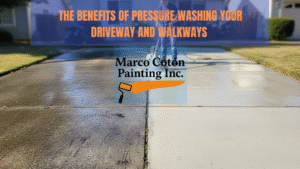A fresh coat of paint can completely transform the look and feel of your home, adding value, style, and a sense of renewal. But while painting may seem like a straightforward DIY project, there are plenty of common mistakes homeowners make that can result in uneven finishes, wasted time, and costly do-overs.
Whether you’re painting your living room, bedroom, or exterior, avoiding these pitfalls will save you stress and help you achieve professional-quality results. Here’s a look at the top home painting mistakes and how to avoid them.
1. Skipping Surface Preparation
Mistake: Jumping straight into painting without cleaning, sanding, or priming.
Why It’s a Problem:
Dirt, dust, and grease can prevent paint from adhering properly, leading to peeling or streaking. Uneven surfaces can also show through after drying.
How to Avoid It:
- Wash walls with a mild soap solution
- Fill in holes and cracks with spackling paste
- Sand rough areas for a smooth surface
- Always use a primer, especially on new drywall, stained surfaces, or when switching from dark to light colors
2. Choosing the Wrong Paint Finish
Mistake: Picking a finish based solely on color without considering function.
Why It’s a Problem:
Each finish serves a different purpose. For example, flat paints hide imperfections but aren’t washable, while high-gloss finishes highlight flaws but are easy to clean.
How to Avoid It:
Choose the right finish for each room:
- Flat/Matte: Best for ceilings or low-traffic areas
- Eggshell/Satin: Great for living rooms and bedrooms
- Semi-gloss: Ideal for kitchens, bathrooms, and trim
- Gloss: Perfect for doors and cabinets
3. Using Low-Quality Tools and Paint
Mistake: Trying to save money with cheap brushes, rollers, or bargain-bin paint.
Why It’s a Problem:
Low-quality tools can leave streaks, shed bristles, and create uneven coverage. Cheap paint usually requires more coats and wears out faster.
How to Avoid It:
Invest in high-quality brushes, rollers, and painter’s tape. Choose a reputable paint brand for better durability and color payoff.
4. Not Testing the Paint Color First
Mistake: Choosing a color from a swatch and painting the entire room without testing.
Why It’s a Problem:
Lighting can drastically change how a color looks. What seems perfect in the store may look completely different in your space.
How to Avoid It:
- Get sample paint pots
- Paint small sections of your wall
- View them at different times of the day and under artificial light
5. Painting Over Glossy Surfaces Without Sanding or Priming
Mistake: Applying new paint directly over a glossy or oil-based surface.
Why It’s a Problem:
New paint won’t stick well, leading to peeling or cracking over time.
How to Avoid It:
- Sand the surface lightly to create grip
- Use a bonding primer to ensure adhesion
6. Ignoring Weather Conditions (for Exterior Projects)
Mistake: Painting exteriors on very hot, cold, or humid days.
Why It’s a Problem:
Extreme weather affects how paint dries and cures, potentially leading to bubbling, cracking, or uneven finishes.
How to Avoid It:
- Check the weather forecast before starting
- Ideal conditions are dry days with temperatures between 50°F and 85°F (10°C–29°C)
7. Applying Thick Coats of Paint
Mistake: Trying to get full coverage in one go by using thick layers.
Why It’s a Problem:
Thick coats are prone to drips, uneven drying, and peeling.
How to Avoid It:
- Apply two or more thin coats
- Allow proper drying time between each coat (follow paint can instructions)
8. Not Using Painter’s Tape Properly
Mistake: Rushing the taping process or skipping it altogether.
Why It’s a Problem:
You risk messy edges, paint bleeding onto trim, or walls with jagged lines.
How to Avoid It:
- Use high-quality painter’s tape
- Press down firmly to seal edges
- Remove tape at a 45° angle while the paint is still slightly wet
9. Painting in Poor Lighting
Mistake: Painting in dim or artificial light without proper illumination.
Why It’s a Problem:
You may miss spots, over-apply paint, or fail to notice streaks and drips.
How to Avoid It:
- Use bright, natural daylight where possible
- Supplement with portable work lights to brighten dark areas
10. Rushing the Job
Mistake: Trying to finish too quickly without letting the paint dry properly.
Why It’s a Problem:
Touch-ups will look uneven, and the paint job may lack durability and smoothness.
How to Avoid It:
- Follow the manufacturer’s drying and recoat times
- Take your time with each section for a seamless finish
Final Thoughts
Painting your home can be rewarding, but avoiding these common mistakes is essential for a lasting and professional-looking result. From prepping your surfaces to using the right tools and techniques, every step counts.
By following these tips, you’ll not only improve the appearance of your space but also extend the life of your paint job. So next time you’re picking up a brush or roller, remember: success is in the prep and the patience.






